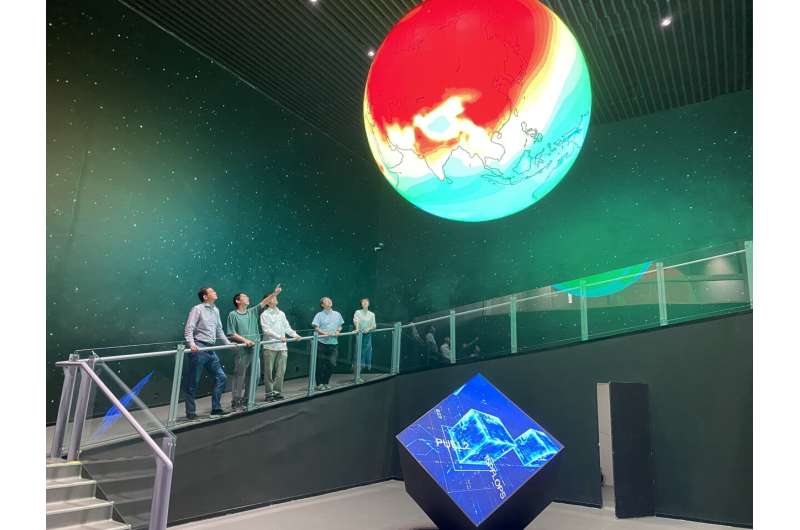This article has been reviewed according to Science X's editorial process and policies. Editors have highlighted the following attributes while ensuring the content's credibility:
fact-checked
peer-reviewed publication
trusted source
proofread
New developments in the accurate simulation of atmospheric carbon dioxide

The Chinese Academy of Sciences Earth System Model (CAS-ESM2.0), a sophisticated Earth modeling tool, has achieved a major breakthrough in fully coupled atmospheric CO2 simulation, as revealed in Advances in Atmospheric Sciences.
The study was conducted by researchers from the Institute of Atmospheric Physics of the Chinese Academy of Sciences, Beijing Normal University and Stony Brook University.
Their findings highlight CAS-ESM2.0's exceptional capability in two-way coupling of terrestrial and marine carbon cycles, along with atmospheric CO2, enabling accurate spatiotemporal assessments of atmospheric CO2 changes.
Atmospheric CO2, a pivotal greenhouse gas, has surged since the Industrial Revolution, significantly affecting both the global climate, leading to warming through the greenhouse effect, and ecosystems by enhancing plant photosynthesis. It remains central to worldwide climate and environmental research.
Earth system models play a vital role in studying atmospheric CO2 concentration changes and their complex interactions with climate across different spatiotemporal scales. Achieving full coupling of atmospheric CO2 in these models has long been a challenge, particularly in emissions-driven simulations, where CO2 interacts with land and ocean carbon cycles. This complexity presents numerous challenges and uncertainties.
Over several decades, CAS-ESM has undergone continuous development, culminating in the release of CAS-ESM2.0. This latest version has completed the sixth phase of the Coupled Model Intercomparison Project (CMIP6) Diagnosis, Evaluation, and Characterization of Klima (DECK) simulations (concentration-driven runs) and submitted the results to CMIP6.
The team's subsequent efforts focused on enhancing CAS-ESM2.0 to achieve two-way coupling among atmospheric CO2, the physical climate system, and the carbon cycle in land and ocean. This breakthrough empowers CAS-ESM2.0 to simulate CO2-carbon-climate interactions and autonomously calculate atmospheric CO2 concentrations.
Leveraging CAS-ESM2.0's capabilities, the researchers conducted a coupled carbon-climate simulation in alignment with CMIP6's historical emissions-driven experiment proposal. The results are remarkable, with CAS-ESM2.0 demonstrating excellent agreement with observations, accurately reproducing the rising trend of annual CO2 levels from 1850 to 2014 and capturing the seasonal CO2 cycle.
CAS-ESM's potential applications, given its ability to simulate CO2-carbon-climate interactions, are manifold. It offers a valuable tool for investigating scientific issues related to carbon-climate interactions, enabling quantification of model biases associated with specific processes, such as fire and vegetation dynamics, and revealing the underlying mechanisms.
Furthermore, CAS-ESM holds promise in supporting China's goal of carbon neutrality. By employing CAS-ESM to assess net carbon fluxes at each stage of the carbon-neutrality journey, policymakers can receive invaluable insights to refine strategies on carbon neutrality.
More information: Jiawen Zhu et al, CAS-ESM2.0 Successfully Reproduces Historical Atmospheric CO2 in a Coupled Carbon-Climate Simulation, Advances in Atmospheric Sciences (2023). DOI: 10.1007/s00376-023-3172-9
Journal information: Advances in Atmospheric Sciences
Provided by Chinese Academy of Sciences




















